iPhone 13 vs iPhone 13 Pro Camera Comparison
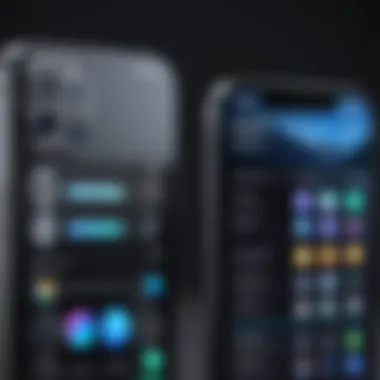
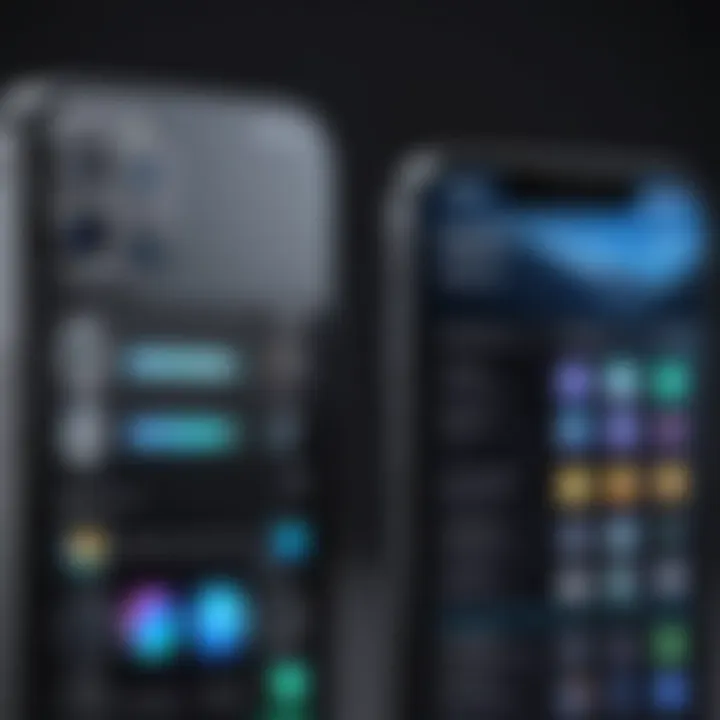
Intro
The iPhone 13 series by Apple has attracted considerable attention since its launch. Among its standout features, the camera systems have become a focal point for many users. The distinction between the standard iPhone 13 and the iPhone 13 Pro models raises questions about which device offers superior photographic capabilities. This section aims to outline key features and specific product specifications, providing a foundation for a detailed comparative analysis.
Key Features
Design and Build Quality
Both the iPhone 13 and iPhone 13 Pro boast sleek designs, a signature of Apple. The iPhone 13 has a glass front and back design with an aluminum frame. It is available in several colors. The Pro variant, however, elevates the aesthetic with a more premium feel. Its surgical-grade stainless steel frame adds durability and elegance. In terms of weight, the iPhone 13 weighs 174 grams, while the Pro is slightly heavier at 204 grams due to its advanced materials.
Camera Layout
Camera layout differs notably between the two models. The iPhone 13 features a dual-camera system which includes a wide and ultra-wide lens. This setup is robust for general photography. On the other hand, the iPhone 13 Pro comes equipped with a triple-camera system, adding a telephoto lens. This lens expands versatility, enabling optical zoom capabilities for more complex shots. The arrangement of lenses is also designed for improved low-light performance, particularly in the Pro model.
Product Specifications
Technical Specifications
When diving into the technical aspects, the differences become clearer. The iPhone 13 camera has a wide aperture of f/1.6 for the main lens and f/2.4 for the ultra-wide, providing decent performance under various lighting conditions. In contrast, the iPhone 13 Pro enhances this with advanced features such as Night mode across all lenses, ProRAW support, and improved computational photography capabilities, making it better suited for those serious about photography.
The sensor in the Pro model is larger, which allows more light, resulting in superior image quality. Additionally, the Pro can capture 4K video at 60 fps across all lenses, while the standard model is limited in some aspects.
Compatibility and Connectivity
Both devices share similar connectivity features like 5G, Wi-Fi 6, and Bluetooth 5.0. However, the Pro model introduces ProMotion technology, providing a smoother display experience by adapting the refresh rates up to 120 Hz. Such specifications may not directly pertain to camera use, yet they enhance the overall user interface when viewing and editing photos and videos on the device.
The camera system is not just about hardware; it's about the experience and results it provides.
Preface to the iPhone Camera System
In the rapidly evolving landscape of smartphone technology, the camera system often stands as a key differentiator between devices. This section will focus on the iPhone 13 camera system, underscoring its significance not only in Apple's lineup but also in the broader market. The advancements in mobile photography have reshaped user expectations, making it essential to examine what the iPhone 13 offers in terms of features, performance, and usability.
The iPhone 13 camera system boasts a variety of capabilities that can cater to both casual users and photography enthusiasts. From hardware specifications to software enhancements, each facet plays a role in delivering high-quality images and videos. Therefore, understanding these elements provides insights into how the iPhone 13 camera may affect your daily photography and videography needs.
Moreover, with the ongoing demand for improved image quality, features like night mode and cinematic video recording are essential for users who expect more from their devices. Analyzing the iPhone 13 camera system prepares consumers to make knowledgeable choices aligned with their specific photographic aspirations.
Overview of iPhone Camera Features
The iPhone 13 camera features reflect a blend of innovation and practicality, designed to enhance the user experience. It is equipped with a dual-camera setup that includes a 12MP wide and a 12MP ultra-wide lens. The wide lens incorporates a larger sensor that collects more light, optimizing low-light performance significantly.
Key features include:
- Night Mode: Allows for detailed photos in various lighting conditions, improving performance in dark environments immensely.
- Smart HDR 4: Refines highlights and shadows in photos, resulting in clearer and more colorful images.
- Photographic Styles: Enables users to customize their photo settings without sacrificing depth and detail, a unique aspect of this camera system.
These features combined position the iPhone 13 as a formidable tool for capturing moments that are both vivid and life-like in diverse settings.
Overall Design and Build Quality
The design and build quality of the iPhone 13 camera system merits attention. Apple has prioritized a sleek aesthetic while ensuring durability. The camera lenses are protected by a ceramic shield, making them less susceptible to scratches or damage. This commitment to quality extends to the layout; the arrangement of the lenses is both logical and intuitive, enhancing ease of use.
In terms of shape, the notch is slightly smaller than previous models, providing a cleaner interface on the front display. The glass back allows for better wireless charging capabilities, though it is essential to handle it with care to avoid potential slips or drops.
Considering all these aspects, the build and design make the iPhone 13 not just a functional camera but also an appealing device overall. Understanding these elements help users appreciate the device's capabilities in both a technical and aesthetic context.
Prolusion to the iPhone Pro Camera System
The iPhone 13 Pro camera system represents a significant leap in mobile photography capabilities. This section examines the key attributes that set the Pro model apart from its standard counterpart. Understanding these features is essential for any user who values high-quality photography and videography. With the increasing reliance on smartphones for capturing memories, the advancements in camera technology are crucial. The iPhone 13 Pro offers more than just a basic camera; it provides tools that enhance creativity and improve overall image quality.
Additional Features of iPhone Pro Camera
The iPhone 13 Pro integrates several additional features that elevate its camera system. One such feature is the ProRAW format, which captures images in RAW format while retaining Apple's computational photography enhancements. This gives users more flexibility during post-processing. Another valuable addition is the improved low-light performance, facilitated by the larger sensor and advanced algorithms. The Night mode is now available on all three lenses, including the ultra-wide, allowing for exceptional photos in dim lighting.
Moreover, the iPhone 13 Pro includes a Telephoto lens with a 3x optical zoom. This provides a more versatile shooting experience. Users can achieve stunning detail from a distance without losing quality. Additionally, the Photographic Styles feature allows users to personalize the look of their photos, combining different settings that suit their style without needing extensive editing.
"The iPhone 13 Pro camera system redefines mobile photography with features that appeal to both casual users and professionals."
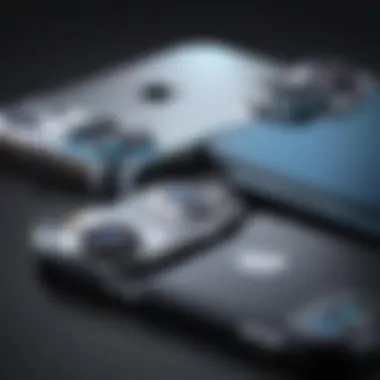
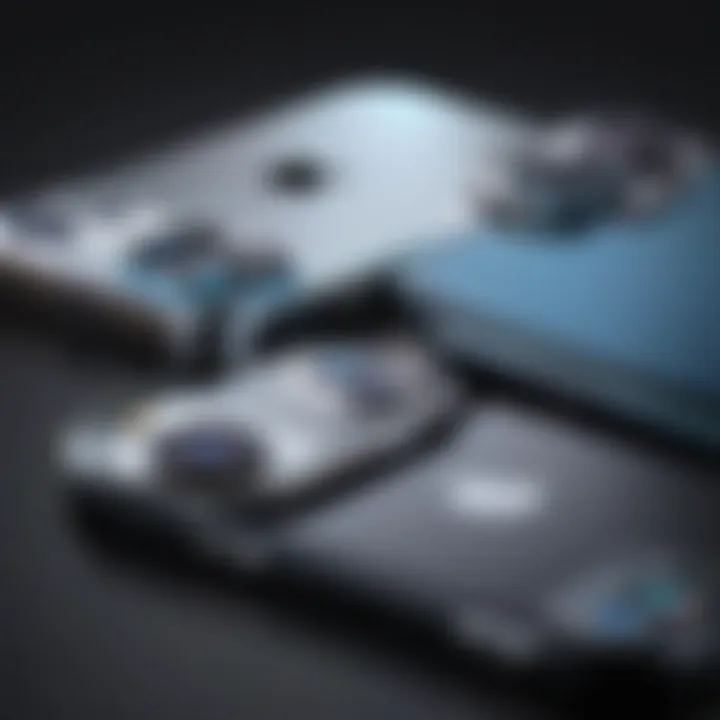
Build Quality and Design Enhancements
The build quality of the iPhone 13 Pro has been enhanced to complement its camera performance. The design remains sleek and modern, made with surgical-grade stainless steel, contributing to both durability and aesthetics. The Pro variant features a Ceramic Shield front cover, which is tougher than traditional glass, thereby offering better protection against drops and scratches.
Another design enhancement is the arrangement of the camera lenses on the back. The lenses are larger, which reflects their improved capabilities. They are also positioned in a way that minimizes lens flare and distortion, ensuring clearer images.
To sum up, the iPhone 13 Pro not only improves technically but also offers a robust design that supports its advanced camera features. The thoughtful integration of additional features and enhancements makes it a top choice for photo enthusiasts.
Camera Specifications: iPhone vs iPhone Pro
When comparing the iPhone 13 and iPhone 13 Pro, understanding the camera specifications is vital. The camera is often a primary deciding factor for users. Those who love photography or video will find the specs crucial in determining which device can fulfill their needs. Each model offers a range of specifications that cater to different user preferences.
In this section, we will explore important aspects of camera specifications in both models, with a focus on sensor capabilities, lens comparisons, and aperture ratings. This will aid in discerning how these features impact overall image and video quality.
Sensor Capabilities
The sensors used in the iPhone 13 and iPhone 13 Pro play a significant role in image capture. The iPhone 13 features a dual-camera system, while the iPhone 13 Pro comes equipped with a triple-camera system. These differences in sensor setup translate to varying performance in different lighting conditions.
The iPhone 13 has 12-megapixel sensors for both its wide and ultra-wide lenses. This setup is capable and provides satisfactory results for casual photography. The sensor size and efficiency impact low-light photography and overall detail retention.
In contrast, the iPhone 13 Pro adds a telephoto lens to its wide and ultra-wide sensors. The telephoto camera enhances the versatility for portrait shoots and zoom capabilities. Plus, the Pro's sensors come with improved low-light performance, partly due to a larger sensor size and advanced image processing.
An exploration of sensor capabilities demonstrates how professionals and enthusiasts can benefit from the extras offered by the Pro model.
Lens Comparisons
Examining the lenses of both devices reveals further differences. The iPhone 13's dual setup includes a wide lens and an ultra-wide lens. It allows for wider shots but lacks the telephoto capability. The 26mm wide lens provides a decent focal length for general photography, while the 13mm ultra-wide lens captures expansive landscapes.
On the other hand, the iPhone 13 Pro introduces a 77mm telephoto lens, expanding the potential for creative photography. This lens is ideal for capturing distant subjects without losing detail.
The quality of each lens plays a role in how users experience photography. The Pro model's lenses enable a wide array of artistic options, further enhancing the appeal for photography enthusiasts.
Aperture Ratings
Aperture ratings affect how much light enters the camera. For the iPhone 13, the wide lens has an aperture of f/1.6, and the ultra-wide lens has an aperture of f/2.4. This configuration allows good light capture, essential for good images in various conditions. However, the performance is limited compared to the Pro model.
In comparison, the iPhone 13 Pro's wide lens offers an f/1.5 aperture, which allows slightly more light than iPhone 13. The ultra-wide lens on the Pro retains the same f/1.8 aperture but gives users improved depth of field effects thanks to better low-light performance.
Overall, a lower f-stop number signifies better light capture, which is critical in nighttime or dimly lit settings. This aspect of aperture ratings helps to outline why the Pro is favored by professionals.
"Understanding camera specifications paves the way for informed decisions for photography enthusiasts."
Image Quality Analysis
The analysis of image quality serves as a crucial aspect in the comparative study of the iPhone 13 and iPhone 13 Pro cameras. Image quality can significantly influence a user's decision when selecting a device, especially for those who prioritize photography and videography. Key elements such as clarity, color accuracy, low-light performance, and dynamic range come into play. Understanding these elements will help identify which model suits differing user requirements.
Low Light Performance
Low light performance is an essential feature for many photographers who often find themselves shooting in less-than-ideal lighting conditions. The iPhone 13 and iPhone 13 Pro cameras have technologies designed to enhance performance in such settings. The iPhone 13 model includes a larger sensor compared to its predecessor, which aids in capturing more light, resulting in clearer images.
In various lighting scenarios, the iPhone 13 Pro has advantages due to its advanced sensor-shift optical image stabilization feature. This technology minimizes blurriness that might occur during handheld photography. Additionally, the Pro model incorporates a wider aperture for its primary lens, allowing more light to enter, enhancing the photos taken in dim environments. Users can notice a distinct difference in the noise levels in images captured by both devices when the light fades. While the iPhone 13 does well, the iPhone 13 Pro outshines in this critical aspect, delivering improved detail and smoother gradients in low light conditions.
Dynamic Range
Dynamic range refers to the capacity of a camera to capture details in both the highlights and shadows within the same scene. This characteristic is vital for photographers working in contrast-rich environments, such as sunlit landscapes with dark shadows. Both the iPhone 13 and iPhone 13 Pro provide impressive dynamic range, largely due to the computational photography features integrated into their camera systems.
However, differences arise in specific scenarios. The iPhone 13 Pro's HDR (High Dynamic Range) capabilities are enhanced by the addition of ProRAW format, which allows for greater control over exposure and post-processing adjustments. Users can see a more balanced exposure with less likelihood of blown-out highlights in challenging lighting situations. The iPhone 13, while still performing effectively, may struggle to maintain detail in both extremes, particularly when adjusting exposure settings. Therefore, those users who engage in more advanced photography may find the iPhone 13 Pro's dynamic range more beneficial for their work.
Video Capabilities Comparison
The comparison of video capabilities between the iPhone 13 and iPhone 13 Pro is essential to understand the overall multimedia performance of both devices. Video recording has become a focal point for consumers, especially with the rise of platforms that showcase video content. As both models highlight their unique strengths, evaluating their capabilities assists users in determining which model better fits their creative needs.
Recording Resolution and Frame Rates
The iPhone 13 offers impressive video recording features, capable of shooting in 4K up to 60 frames per second (fps). This resolution ensures high-quality videos with vivid colors and clarity, making it suitable for casual users and enthusiasts alike.
In contrast, the iPhone 13 Pro enhances this experience further, supporting not just 4K but also variable frame rates for slow-motion recording. Users can capture video at 120 fps and 240 fps in 1080p quality. This flexibility opens up opportunities for creative expression, enabling smooth-motion effects and cinematic sequences.
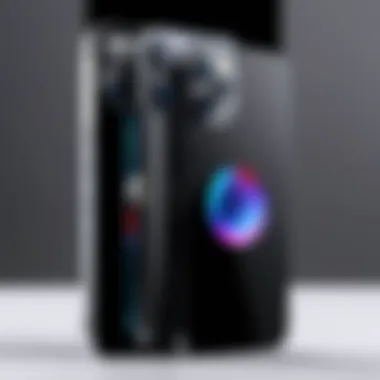
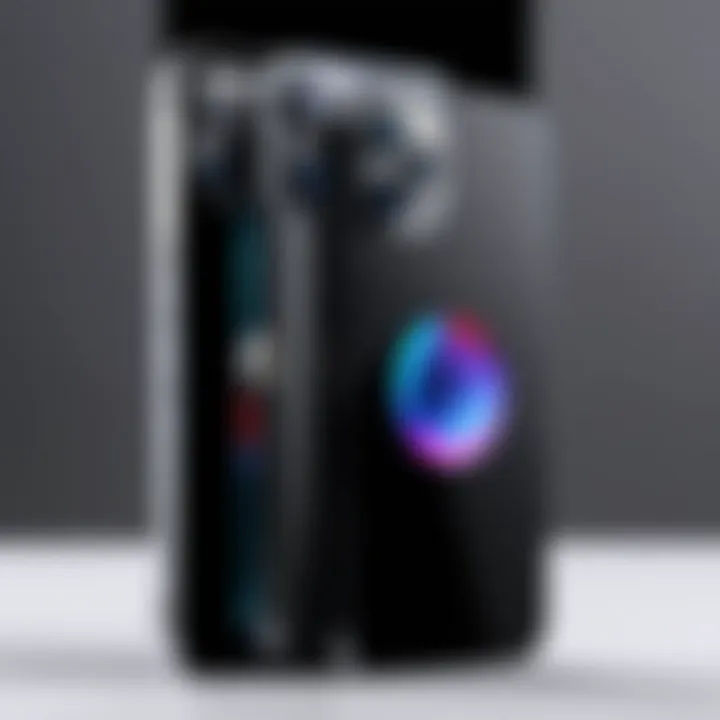
It's also worth noting that both devices utilize Apple's Advanced Video Stabilization technology, which reduces the shakiness often present in handheld videos. The strong performance across both models sets a solid foundation for capturing high-quality footage.
Cinematic Mode and ProRAW Video
One of the standout features of the iPhone 13 Pro is its Cinematic Mode. This mode allows users to create videos with an impressive depth-of-field effect. Users can focus on a subject dynamically and shift the focus during the recording. This not only lends a more professional feel to the videos but also opens up creative avenues typically reserved for high-end cameras.
Additionally, the iPhone 13 Pro provides support for ProRAW video. This feature allows advanced users to capture footage in a format that provides more creative control in post-production. Users can edit video to enhance colors, adjust brightness, and modify contrast—all without losing quality. ProRAW helps to align the iPhone 13 Pro closely with professional video and photography equipment, appealing to creators seeking the best post-processing flexibility.
In summary, the video capabilities of the iPhone 13 and iPhone 13 Pro highlight significant differences that cater to diverse user needs, from casual filming to professional projects.
User Experience and Interface
Understanding the user experience and interface of the iPhone 13 and iPhone 13 Pro cameras is crucial for individuals who value not only hardware specifications but also how intuitive and seamless the photographic journey can be. A refined user interface can dramatically impact how users engage with their camera. It shapes the convenience of accessing features, which ultimately influences photography outcomes.
Camera App Features
Both the iPhone 13 and iPhone 13 Pro share the same core camera app, making it user-friendly for both devices. The app is designed for accessibility, allowing users, regardless of skill level, to capture exceptional images quickly. Key features include:
- Interface Design: A clean, minimalistic layout ensures users focus on what matters — taking photos. Functions such as zoom, shutter button, and mode selection are easily accessible.
- Quick Setting Access: Users can effortlessly switch between photo and video modes, or access settings for flash, live photo, and other essentials with a simple tap.
- Filters and Effects: Built-in filters enhance images without needing additional apps. This feature allows immediate customization and creativity.
- Smart HDR: This feature automatically adjusts settings for optimal exposure and color balance. It works effectively in varied lighting conditions, resulting in better photo quality without complex adjustments.
The intuitive nature of these features aids in quickly adapting to the camera system. Users can spend more time capturing moments rather than grappling with complicated settings.
Shooting Modes Comparison
The versatility of shooting modes in both devices is essential for users seeking different photographic effects. While the basic modes are similar, there are differences in how they leverage technology.
- Standard Photo mode: Both devices excel in basic photo capture with impressive image quality. However, the Pro model enhances this with improved processing algorithms.
- Night Mode: Available on both models, it uses longer exposure to capture details in low light. The iPhone 13 Pro, however, employs advanced sensor-shift technology for even better performance.
- Portrait Mode: Both models allow for stunning portrait photography with background blur. The Pro version offers additional lighting effects, giving users more creative control.
- Macro Photography: The iPhone 13 Pro introduces a macro mode, allowing users to shoot close-ups with remarkable detail. This feature is particularly beneficial for product photography and nature shots.
The enhancements in shooting modes primarily showcase the iPhone 13 Pro’s capabilities, appealing to photography enthusiasts wanting to explore more advanced techniques and achieve superior results.
In summary, while both models deliver an excellent user experience, the iPhone 13 Pro enriches it with additional features and advanced shooting capabilities, making it a more enticing choice for users who demand sophistication in their photography pursuits.
Post-Processing Software Capabilities
Post-processing software capabilities play a crucial role in the overall photography experience for both the iPhone 13 and iPhone 13 Pro users. Enhanced post-processing options can significantly improve photo quality, making a simple image into a work of art. Often, the most compelling features of a camera do not lie solely in the hardware but also in the software's ability to refine and edit the captured images. With the increasing importance of social media and digital sharing, proficient post-processing tools have become just as vital as the original camera hardware.
The ability to fine-tune photos helps users express their personal styles. For instance, adjusting brightness, contrast, and saturation can transform a good photo into an impressive one. Also, non-destructive editing allows photographers to experiment without losing the original image quality. This flexibility is particularly important for serious photographers who want their images to stand out while staying true to their vision.
Editing Options on iPhone
The iPhone 13 camera system offers users robust editing options right within the Photos app. Basic tools include cropping, rotating, and adjusting exposure. Users can apply filters, which modifies the overall tone and style of images effortlessly. The automatic enhancements improve image quality in one tap, making it user-friendly for anyone who prefers swift adjustments.
Other features like portrait lighting adjustments allow for creativity with effects such as stage light or contour light. These tools provide an easy way to experiment and enhance portrait photos with various lighting styles. Additionally, the ability to revert all changes preserves the original image, ensuring that users can always start fresh if needed.
- **Basic editing tools:
- Portrait lighting adjustments:
- Cropping and rotation
- Automatic enhancement
- Filters selection
- Stage light
- Contour light**
These options empower users to make effective edits directly on their smartphones, enhancing their photographic experience significantly.
Advanced Editing Features on iPhone Pro
The iPhone 13 Pro takes editing to the next level with advanced features tailored for serious photographers. This model supports ProRAW format, providing greater control over the editing process. ProRAW combines the benefits of a raw image with the computational photography features of the iPhone. This means that users have more data to work with, allowing for finer adjustments in post-processing without compromising image quality.
The Photos app on iPhone 13 Pro also introduces deep fusion technology. This allows for better texture and detail in images, particularly when shooting in low-light condition. Users can access advanced tools such as selective adjustments, which let them edit specific areas of a photograph while leaving the rest unchanged. Moreover, the addition of manual controls for contrast, warmth, and shadows enables a more professional editing approach.
Some noteworthy editing features include:
- ProRAW support
- Selective adjustments
- Depth control for portraits
- Enhanced low-light capabilities
The combination of these advanced editing features provides iPhone 13 Pro users the ability to transform images with precision, meeting the demands of high-quality photographic editing.
Overall, the post-processing capabilities can be as transformative as the camera itself, allowing users to refine their work with remarkable ease.
Battery Consumption and Performance During Camera Usage
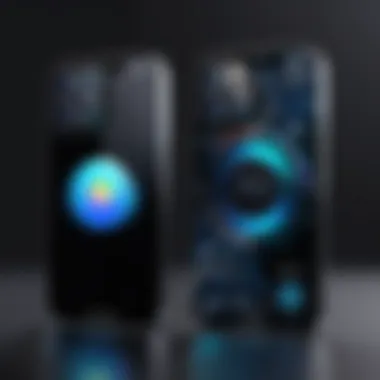
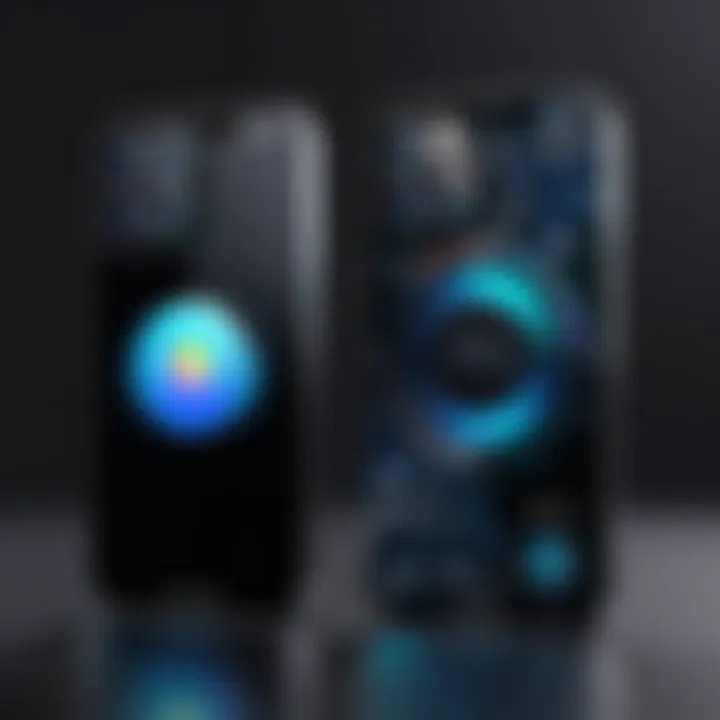
The significance of battery consumption during camera usage is often overlooked, yet it holds critical value for users making a choice between the iPhone 13 and the iPhone 13 Pro. Both models are designed for capturing moments through photography and videography, but the energy required to operate these functionalities brings forth vital considerations. In an era where smartphones serve as miniaturized cameras, understanding battery performance can substantially affect the user experience. Whether snapping a quick shot or recording an extended event, the efficiency and longevity of battery usage become paramount for those who value longevity and creativity.
Average Battery Usage in Photography
When evaluating the average battery usage in photography, several factors come into play. Each camera function—be it standard photo capture, using night mode, or applying advanced features like manual adjustment—can yield varying battery demands. On average, users may find that photography with the iPhone 13 consumes significant power, particularly in scenarios requiring higher processing, such as low-light conditions.
For instance, shooting over an extended period may see the iPhone 13's battery drain faster when utilizing features like HDR or Live Photos. Users have reported experiencing about 10-15% battery reduction for every 30 minutes of active photography.
Similarly, the iPhone 13 Pro, equipped with more advanced features, may also exhibit a significant drain but generally compensates for this with enhanced energy efficiency through its ProRAW capabilities. Such complexities illustrate why users must remain aware of their camera's energy needs during usage.
Video Recording Battery Drain
Video recording brings its own unique set of challenges concerning battery drain. The iPhone 13 and iPhone 13 Pro both support various recording qualities, from 4K at 60 fps to Cinematic mode for video. Notably, the demand for battery power escalates as recording resolution increases.
On average, users may see the iPhone 13 retaining about 20-25% battery during an hour of 4K video recording, while the Pro model might sustain slightly more power due to optimized processing capabilities. Therefore, for content creators or those who frequently document events, understanding the implications of long video sessions on battery is critical.
"Battery life is not just a number; it defines how long you can unleash creativity without constantly worrying about searching for a power source."
To conclude, both models showcase commendable performance in various usages, but the distinction in battery consumption during camera activity warrants attention. Each user's experience may vary based on usage patterns, resolution settings, and additional features. Being aware of these aspects can greatly enhance one’s capability to utilize the camera efficiently while ensuring that battery life meets user demands.
Price Considerations
When evaluating the camera systems of the iPhone 13 and iPhone 13 Pro, price considerations become a focal point for many buyers. The difference in cost between these two models often encapsulates varying features and specifications that directly impact their camera performance. Understanding how price correlates to camera quality, features, and overall value is essential for an informed purchasing decision.
The iPhone 13 is positioned as a more budget-friendly option within Apple’s lineup, appealing to casual photographers and everyday users. Meanwhile, the iPhone 13 Pro is marketed towards enthusiasts and professional users who require more advanced capabilities. Therefore, price does not merely reflect the cost of the device, but also signifies the level of photography experience it can offer.
Informed buyers should consider several specific elements when weighing price considerations:
- Budget: Evaluate how much you are willing to spend on a smartphone.
- Usage: Determine how often and in what settings you will use the camera.
- Value for Money: Assess the benefits to justify the higher price of the iPhone 13 Pro if its features greatly enhance your photography needs.
"Understanding the price difference is crucial for choosing the device that aligns with not just your budget but your photographic aspirations."
Taking into account these aspects ensures that consumers select the right model that fits their financial plans and photographic ambitions. Now let's break down the costs of both devices more specifically.
Cost of iPhone
The iPhone 13 is priced lower than the Pro variant, making it an attractive option for those who desire high-quality camera capabilities without the burden of premium costs. The standard model starts at a competitive price point, which is often highlighted during promotional periods. Its cost reflects the advanced technology it carries, including dual-camera systems, which provide excellent versatility for various photography needs.
Some features that justify its cost include:
- User-friendly camera functions: Ideal for straightforward photography.
- Decent low-light performance: Sufficient for casual use.
- Great video capabilities at a base level: Provides solid video recording features without requiring additional investment.
Overall, the cost of the iPhone 13 offers a compelling package, especially for users who value efficiency in photography without needing the additional features found in more professional setups.
Cost of iPhone Pro
The iPhone 13 Pro carries a higher price tag that reflects its advanced camera technology and additional features. Starting at a distinctively higher cost, this model is tailored for enthusiasts and professionals alike, serving those who take their photography seriously. The price hike is largely attributable to:
- Triple-camera system: Allowing for improved photographic flexibility and unique features such as macro photography.
- ProRAW and ProRes capabilities: Catering to users keen on post-editing with extensive control over image quality.
- Enhanced low-light performance: Making it more adept in challenging lighting conditions.
Buying the iPhone 13 Pro represents an investment in tools for those who aim to elevate their photographic skills and tap into a more nuanced, professional level of imaging. In summary, the cost of the iPhone 13 Pro is a reflection of its advanced capabilities, providing optimal value for users whose photography demands are more rigorous.
Closure: Which Camera Stands Out?
As we wrap up our examination of the iPhone 13 and iPhone 13 Pro camera systems, it is crucial to understand the distinctive features that set these two devices apart. This analysis helps in informing potential buyers about their choice, whether they are photography enthusiasts or casual users merely looking for a reliable smartphone camera. The concluding section encapsulates the essential takeaways regarding their performance, specifications, and suitability based on user preferences.
Summarizing Key Differences
The iPhone 13 Camera and the iPhone 13 Pro Camera cater to different user demographics, each with their own strengths. Here are some key distinctions:
- Camera Setup: The iPhone 13 includes a dual-camera setup, whereas the iPhone 13 Pro boasts a triple-camera system.
- Optical Zoom: The Pro model offers a 3x optical zoom, which the standard model lacks.
- Night Mode: While both models support Night Mode, the Pro's capabilities are enhanced by its wider aperture and additional lens.
- Cinematic Mode: This feature is present on both, but the Pro model supports higher resolutions in this mode.
These differences indicate that the Pro model is designed with a more advanced user in mind, especially those who seek additional creative control and flexibility in their photography.
Final Recommendations Based on User Needs
When deciding between the iPhone 13 and the iPhone 13 Pro, several factors should be kept in mind:
- Budget Considerations: The iPhone 13 serves as a more budget-friendly option, making it appealing for general consumers who want quality without the extra features.
- Photography Enthusiasts: If photography is a passion, the iPhone 13 Pro is worth the investment due to its advanced features and superior performance in varied conditions.
- Usage Context: For everyday use, casual snapshots, and social media sharing, the iPhone 13 delivers satisfactory results. However, professional photographers or video content creators will appreciate the enhancements offered by the Pro variant.
"Ultimately, the ideal camera choice should align with the user's lifestyle and photographic ambitions."
For further exploration of these devices, consider checking out resources like Wikipedia or Reddit for user testimonials and discussions.



